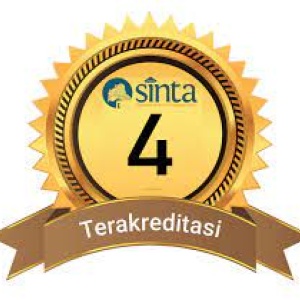Representasi Tokoh Cakraningrat dalam Sajarah Proza Begin Brawijaya
DOI:
https://doi.org/10.37014/jumantara.v11i2.1033Keywords:
Traditional historiography, Madura, Representation, Mikul dhuwur mendhem jeroAbstract
This paper is the result of a study of the Nusantara manuscripts using the historical text sources of Madura. The object of this research is the transliteration of a manuscript from the collection of the Central Library of Indonesia entitled Sajarah Proza Begin Brawijaya (SPBB) code SJ.230 Novarina edition (2020). In examining the manuscript, the philological method and literary theory framework were used. From the field of literature, Jan van Luxemburg's structural theory, Julia Kristeva's intertextuality, and Teeuw's concept of literary representation are used. From the structural study, it can be seen that the SPBB text framework is composed of literary structures and content structures (history), which as a whole serve to legitimize the power of the 17-18 century Madurese king. Meanwhile, the results of the intertextual analysis showed that the elements built into the content structure (history) of the SPBB text were connected with M.C. Ricklefs and H.J. De Graaf in representing Cakraningrat as the main figure in the history of Java, Madura, and VOC based on the author's life view to raise one of the values of the Javanese philosophy of life in this text. This linkage results in the conclusion that as a traditional Javanese historical literary work, the SPBB text is representative of its creator's culture, one of which is as a representation of the philosophy of mikul dhuwur mendhem jero in the Javanese view of life.References
Abrams, M.H. 1953. The Mirror and the Lamp: Romantic Theory and the Critical Tradition. USA: Oxford University Press.
_______. 1981. Teori Pengantar Fiksi. Yogyakarta: Hanindita.
Afif, Amrullah. 2015. "Islam di Madura." Islamuna, Vol. 2 No.1 Juni.
Behrend, T.E. (ed), dkk. 1990. Katalog Induk Naskah-naskah Nusantara Museum Sonobudoyo. Yogyakarta: The Museum.
______dan Titik Pudjiastuti. 1997. Katalog Induk Naskah-naskah Nusantara FSUI. Jakarta: Yayasan Obor Indonesia.
______. 1998. Katalog Induk Naskah-naskah Nusantara Jilid 4 Perpustakaan Nasional Republik Indonesia. Jakarta: Yayasan Obor Indonesia.
Darusuprapta. 1975. Penulisan Sastra Sejarah di Indonesia: Tinjauan Percobaan tentang Struktur Tema dan Fungsi. Leiden: Morsweg.
De Graaf. H.J. 1987. Terbunuhnya Kapten Tack. Jakarta: Pustaka Utama Grafiti dan KITLV.
______. 1987. Runtuhnya Istana Mataram. Jakarta. Pustaka Utama Grafiti dan KITLV.
______dan Th. G. Th. Pigeaud. 1989. Kerajaan-kerajaan Islam di Jawa: Peralihan dari Majapahit ke Mataram. Jakarta: Pustaka Utama Grafiti dan KITLV.
Djajadiningrat, Hoesein. 1983. Tinjauan Kritis Tentang Sajarah Banten: Sumbangan Bagi Pengenalan Sifat-sifat Penulisan Sejarah Jawa. Jakarta: Djambatan.
Dumadi, Janmo. 2011. Mikul Dhuwur Mendhem Jero: Menyelami Falsafah dan Kosmologi Jawa. Yogyakarta: Pura Pustaka.
Endraswara, Suwardi. 2016. Falsafah Hidup Jawa: Menggali Mutiara Kebijakan dari Intisari Filsafat Kejawen. Yogyakarta: Cakrawala.
G.J. Remmelink, Willem. 2002. Perang Cina dan Runtuhnya Negara Jawa 1725-1743. Yogyakarta: Jendela.
Hernawan, Wawan. 2016. "Menelusuri Para Raja Madura dari Masa Pra-Islam hingga Masa Kolonial." Wawasan: Jurnal Ilmiah Agama dan Sosial Budaya, 1 No.2 (239-252).
Kartodirdjo, Sartono. 1993. Pendekatan Ilmu Sosial dalam Metodologi Sejarah. Jakarta: Gramedia.
Luxemburg, Jan van. 1984. Pengantar Ilmu Sastra (terj. Dick Hartoko). Jakarta: Gramedia.
Masyuri. 2018. "Naskah Syiir Nyai Madura (Studi Naskah Syiir Berbahasa Madura Nyai Pondok Pesantren Annuqayah Guluk-Guluk Sumenep Jawa Timur)." Jurnal Pendidikan Ilmu KeIslaman, Vol 1 No.2 Hlm 383-401.
Moedjanto. 1994. Konsep Kekuasaan Djawa. Yogyakarta: Kanisius.
Nurgiyantoro, Burhan. 1995. Teori Pengkajian Fiksi. Yogyakarta: Gadjahmada University Press.
Pradotokusumo, Partini Sarjono. 1986. Kakawin Gadjah Mada: Sebuah Karya Sastra Kakawin Abad ke-20 Suntingan Naskah serta Telaah Struktur, Tokoh, dan Hubungan Antarteks. Bandung: Binacipta.
Pudjiastuti, Titik. 2000. Sajarah Banten: Suntingan Teks dan Terjemahan disertai Tinjauan Aksara dan Amanat (Disertasi). Depok: Universitas Indonesia.
______,dkk. 2018. Kamus Filologi. Jakarta: Kementerian Pendidikan dan Kebudayaan RI.
Putra, Heddy Shri Ahimsa. 2012. Strukturalisme Levi-Strauss: Mitos dan Karya Sastra. Yogyakarta: Kepel Press.
Purwadi. 2007. Filsafat Jawa: Refleksi Butir-butir Kebijaksanaan Hidup untuk Mencapai Kesempurnaan Lahir Batin. Yogyakarta: Cipta Pustaka.
Rafiek, M. 2010. Teori Sastra: Kajian Yeori dan Praktik. Bandung: Refika Aditama.
Ricklefs, M.C. 2016. Sejarah Indonesia Modern. Yogyakarta: Gadjah Mada University Press.
Scholes, Roberts. 1977. Structuralism in Literature. New York: Yale University Press.
Setyani, Turita Indah. 2011. Tantu Panggelaran: Representasi Ruang Simbolik dalam Konsep Kesempurnaan Dunia Jawa. Depok: Universitas Indonesia.
Soedjatmoko, dkk. 1995. Historiografi Indonesia. Jakarta: Gramedia Pustaka Utama.
Suarka, I Nyoman. 1997. Kakawin Aji Palayon: Suntingan Teks, Terjemahan, dan Analisis Struktur. Yogyakarta: Universitas Gadjah Mada.
Sutrisno, Sulastin. 1981. Sastra dan Historiografi Tradisional. Seminar Sejarah Nasional ke-3, Jakarta.
Syamsuddin, Muhammad. 2019. History of Madura: Sejarah, Budaya dan Ajaran Luhur Masyarakat Madura.Yogyakarta: Araska.
WJS. Poerwadarminta. 1939. Baoesastra Djawa. Groningen, Batavia: JB Wolters' Uitgevers-Maatschappiij N.V.
Zoetmulder, P.J dan S.O Robson. 1982. Old Javanese - English Dictionary. S'Gravenhage: Martinus Nijhoff.
Downloads
Published
Issue
Section
License
Copyright (c) 2020 Jumantara: Jurnal Manuskrip Nusantara

This work is licensed under a Creative Commons Attribution-ShareAlike 4.0 International License.
- This statement is the author's commitment to respect copyright, both in terms of citing other people's work and utilizing journal content. If necessary, the author can send an Authenticity Statement of Article stating that "this work is the author's original idea and has never been sent to another publisher and published in any publication"
- The author retains copyright.
- The moral rights of publication belong to the author.
- Formal legal aspects in the use of journal publications refer to the Creative Commons Attribution-ShareAlike 4.0 (CC BY-SA) license, which means that journal content can be used freely for any purpose.









